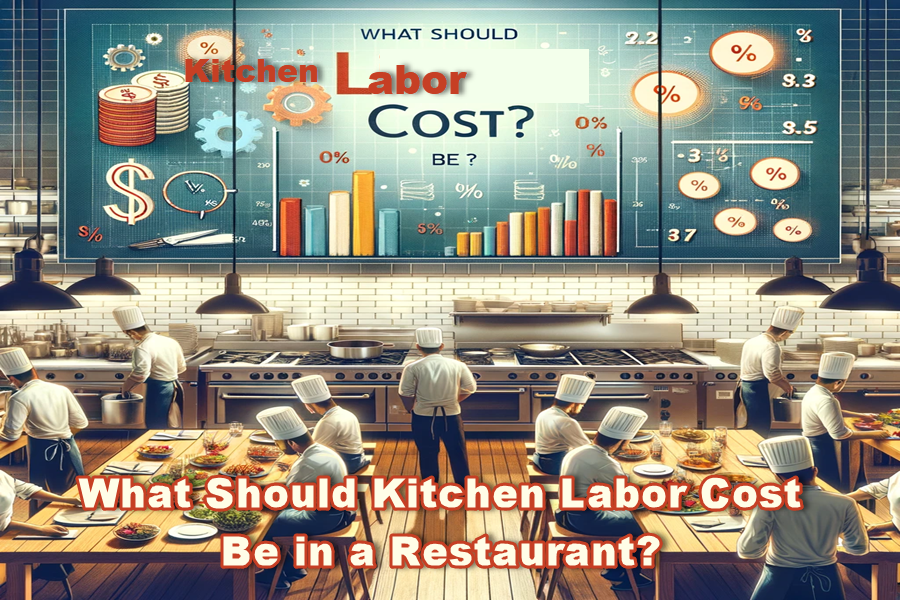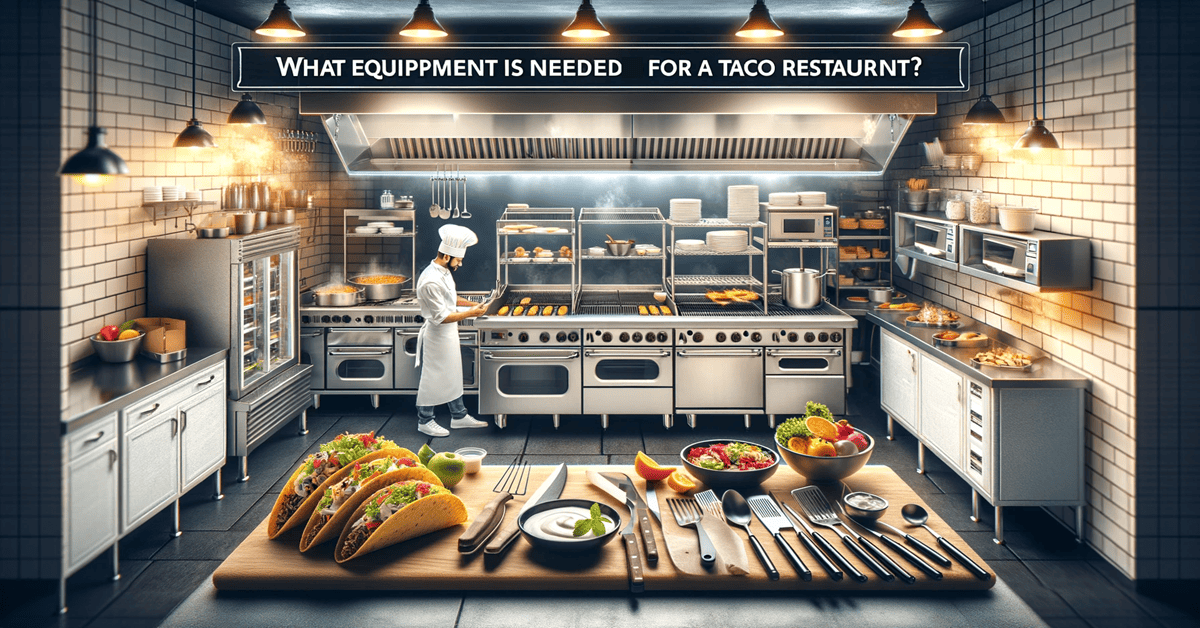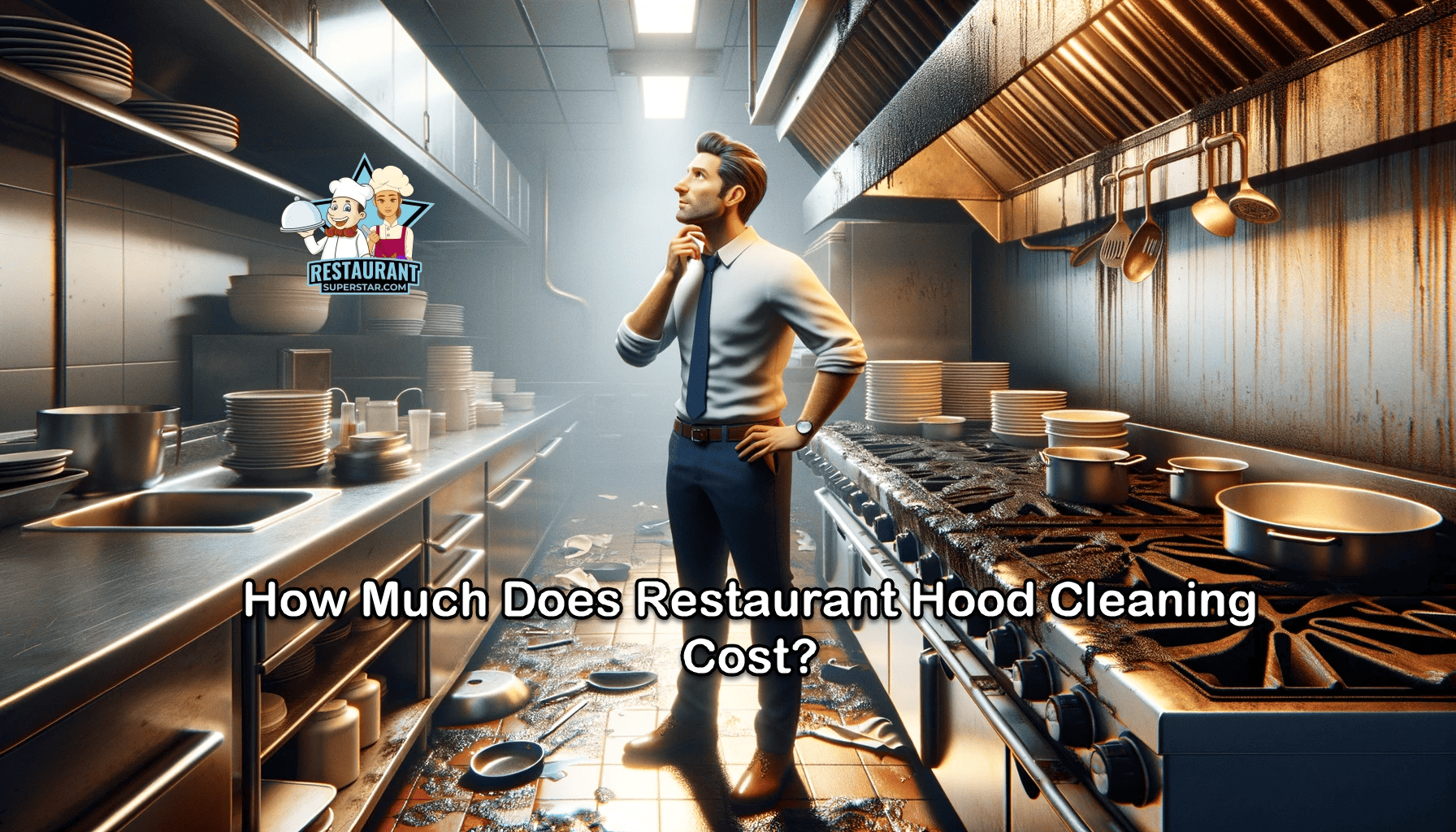How Much Inventory Should Your Restaurant Carry?
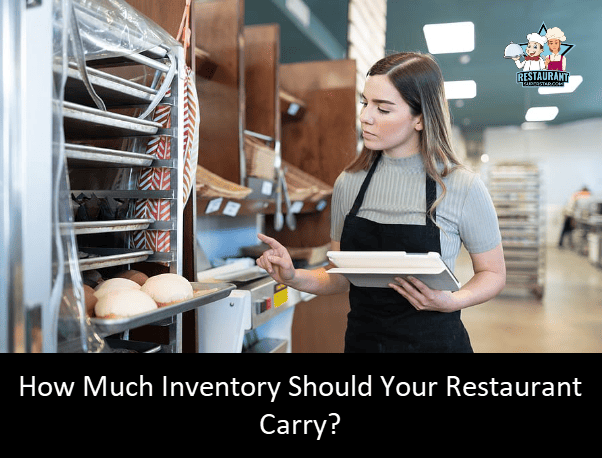
You are in the right place if you’re scratching your head, wondering, “How much inventory should your restaurant carry?“
The sunshine state of Florida boasts a variety of eateries, from waterfront seafood spots to bustling urban cafes, and they all grapple with this exact question.
But here’s the thing: while there’s no one-size-fits-all answer, there’s a sweet spot for every establishment.
How Much Inventory Should Your Restaurant Carry?
How Much Inventory Should Your Restaurant Carry? To manage your inventory effectively, it’s a good idea to stock enough to meet expected sales demands, plus a little extra for unexpected situations like spillage or sudden increases in customer volume. The recommended inventory-to-sales ratio is between 4 and 8. For smooth operations, you should replenish your food or beverage stock 4 to 8 times a month.
Got that?
Cool. But hang tight because while that might sound straightforward, diving deeper can reveal some Florida-sized twists and turns.
This article will explore determining the ‘just right’ inventory level.
Plus, we’ll uncover some insider tips and secrets from successful Floridian restaurateurs.
So, we’ve got you covered whether you’re setting up a trendy restaurant in Miami or a homely diner in Tallahassee.
By the end, not only will you have a grasp on inventory management, but you’ll also have the tools to master it, Florida style.
How much fresh Gulf shrimp or Key West lime should you stock up on?
Well, gator, you’ve got to keep reading to find out.
The journey to mastering restaurant inventory in the Sunshine State starts here. Stay hungry for knowledge, and let’s dive in.
Inventory Challenge for New Restaurant Owners and Chefs
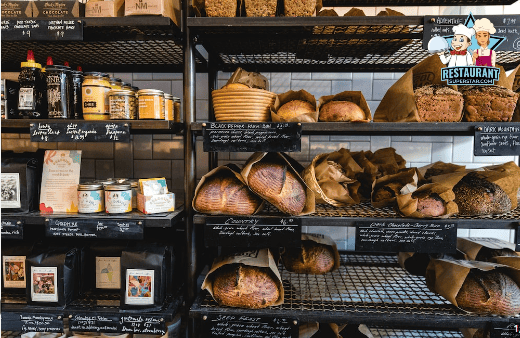
If there’s anything hotter than a scorching summer day in Florida, it’s the subject of inventory management for aspiring restaurant owners and chefs.
With years of experience consulting restaurants throughout our vibrant state, I’ve understood that inventory is the lifeblood of any esteemed eatery.
From the exquisite oysters of Apalachicola to the fiery peppers of Homestead, the quantity on hand can be the deciding factor for your business’s success.
Now, I know what you’re thinking. “Jeff, I got into this business because I love food, not numbers.” Trust me, I get it.
But here’s the rub: understanding how much inventory you should carry is as crucial as knowing the difference between a simmer and a boil.
And if you need clarification on either, I’m here to help.
The Detrimental Impacts of Under-ordering and Over-ordering Inventory
Okay, let’s get down to the nitty-gritty.
- Under-ordering: Picture this. It’s a bustling Friday night. Your restaurant is packed. Suddenly, you run out of that particular ingredient for your signature dish. Panic sets in. Diners are disappointed. Word spreads, and your Yelp rating’s taken a hit before you know it. Ouch! Under-ordering can not only tarnish your reputation but also lead to lost sales. In our fast-paced, social media-driven world, it’s a risk we can’t afford.
- Over-ordering: On the flip side, there’s the over-ordering conundrum. Think of those avocados you ordered too many of. They’re turning brown, and you’re scrambling to use them before they go bad. Overstocking leads to waste, and wasted food equals wasted money in our industry. It’s like throwing your hard-earned dollars straight into the Everglades!
Balancing inventory is an art, my friends. It’s a dance between ensuring you’ve enough stock to meet demand and not so much that it will waste.
But fear not. With some guidance and good old Floridian grit, you’ll manage your inventory like a pro in no time.
So, buckle up, grab your sunnies, and dive into the world of “How Much Inventory Should Your Restaurant Carry?” Sunshine State style.
The Importance of Balanced Inventory Management

Let’s explore the realm of inventory with a touch of Florida charm. During my younger years, I had the opportunity to assist in managing my uncle’s seafood establishment in the Keys.
It was an invaluable experience that underscored the significance of maintaining a well-balanced inventory.
Allow me to share some of those anecdotes and insights with you.
Illustration of the Consequences of Running Out of Ingredients
Hey, remember that time when the “Gator Tail Taco” craze was taking over the state? My uncle, being his genius, decided to add it to his menu.
It became a huge hit! But let me tell you, one crazy weekend, we ran out of gator tail.
Can you imagine?
The restaurant was packed with hungry Floridians, and we had to break the news that no gator tail was left. It was like telling a surfer that there were no waves to catch. Crazy, right?
Here’s what happens:
- Disappointed Customers: No one likes to hear, “I’m sorry, we’re out of that.” It’s a bummer, especially if they drove from miles away just for that dish.
- Lost Revenue: Every “I’m sorry” to a customer is money lost. And in the restaurant business, margins can be thin. You can only afford so many of those misses.
- Damage to Reputation: Word travels fast. And in today’s world of instant reviews and social media shoutouts, one bad experience can quickly amplify. Before you know it, you’re that “place that ran out of gator tail.”
Financial Implications of Having Excess, Unused Ingredients
Now, on the flip side, over-ordering has its pitfalls, too. Back in the day, we once overestimated the popularity of a new shrimp dish.
We ended up with pounds and pounds of shrimp. It’d be a seafood lover’s dream. Not quite.
- Wasted Resources: Having excess means either they go wrong (total waste), or you’re forced to run a “special” to move them out quickly. That can sometimes mean selling at a loss.
- Storage Costs: Florida isn’t known for its cool climate. Storing excess inventory, especially perishables, means more refrigeration, energy costs, and stress.
- Tied-up Capital: Money spent on excess inventory is not available for other crucial parts of the business, like marketing or staff training.
Balancing inventory in your restaurant is like balancing on a paddleboard – it takes practice, and you might get a little wet along the way.
Still, you’ll find your equilibrium with the proper focus and persistence.
So, next time you’re wondering, “How Much Inventory Should Your Restaurant Carry?” remember these tales from sunny Florida and let them guide your decisions.
Understanding Inventory to Sales Ratio
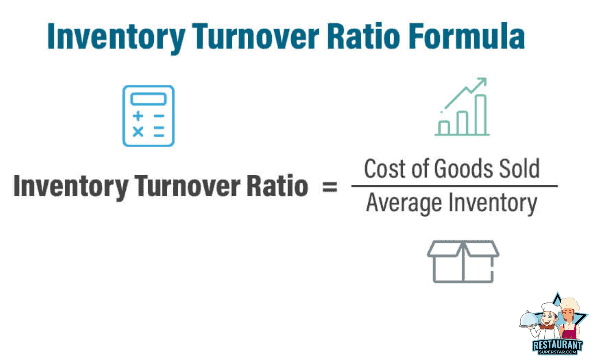
A restaurant’s success and smooth operation often hinges on efficient inventory management. One key metric in this process is the inventory-to-sales ratio.
Understanding and optimizing this ratio can significantly improve a restaurant’s profitability, reduce waste, and enhance the overall dining experience for customers.
Ideal Inventory to Sales Ratio for Restaurants
The inventory-to-sales ratio quantifies the frequency at which a restaurant exhausts its inventory within a specific timeframe. For restaurants, a good ratio is usually between 4 and 8.
This means the aim is to sell the entire food or beverage inventory 4 to 8 times monthly. So ideally, you’d want to hold around 5-7 days’ worth of inventory, assuming you have 1-2 weekly deliveries.
Why this range?
- Preventing Shortages: No restaurant wants to ’86’ a popular dish. Running out of a crucial ingredient during peak times can harm a restaurant’s reputation and customer satisfaction.
- Avoiding Waste: On the flip side, holding excessive inventory can lead to spoilage, waste, and serving dishes that are less fresh than they are. Over-ordering is a solution to prevent shortages, but it can have negative repercussions. Overbuying, especially to avail quantity discounts, can sometimes backfire.
- Optimal Cash Flow: Holding the right amount of inventory ensures that a significant chunk of a restaurant’s capital isn’t tied up in unsold goods. This aids in better cash flow and profitability.
How the Ratio Translates to Days’ Worth of Inventory
Breaking down the inventory-to-sales ratio further, we can deduce the number of days of inventory a restaurant should ideally hold:
- Food: The consensus is to aim for an inventory turnover of 4-6 times monthly. This aligns with holding 5-7 days’ worth of food inventory.
- Liquor: Liquor typically should be turned over approximately once a month.
- Bottled beer: Aim for a turnover of 2-3 times monthly.
- Draft beer: This should be turned over 1-2 times per month, although the specifics can vary based on the number of beers on tap and the restaurant’s sales mix.
- Wine: Like liquor, wine should be turned over about once a month.
Understanding this ratio in terms of days helps restaurants plan better.
For instance, if a restaurant is aiming for an inventory turnover of 5 times per month for food, it means that, on average, every item of food in the inventory will be sold and replaced five times that month. This further translates to holding inventory that will last about six days.
Optimal inventory management is a delicate balance. Restaurants must have enough stock to meet demand without tying up excess capital or risking spoilage.
By understanding and maintaining an ideal inventory-to-sales ratio, restaurants can achieve better financial performance, reduce waste, and consistently offer fresh and delightful dishes to their patrons.
Utilizing modern tools like inventory management software can significantly assist in maintaining this balance and provide valuable insights to optimize operations.
Calculating Inventory Turnover

Inventory Turnover Ratio
A Key Metric for Restaurant Efficiency: Managing inventory efficiently is vital in the bustling world of the restaurant business.
More can lead to waste and tied-up funds, while more can result in satisfied customers. A key metric in this balancing act is the inventory turnover ratio.
Why is the Inventory Turnover Ratio Important?
The inventory turnover ratio reflects how often a restaurant processes its inventory in a given period. It gives insight into how efficiently a restaurant is managing its stock.
A high turnover indicates robust sales or under-ordering, while a low turnover means over-ordering or sluggish sales.
Understanding this ratio can significantly aid in forecasting and optimizing inventory levels.
Step-by-step Guide to Calculating the Inventory Turnover Ratio
1. Understand the Basics
Before delving into the calculations, it’s vital to know what you’re working with:
- Beginning Inventory: The value of your inventory at the start of a period (e.g., the beginning of the month).
- Ending Inventory: The value of your inventory at the end of that period.
- Cost of Goods Sold (COGS): The total cost of goods sold during that period. While total sales can provide a picture, COGS can be more accurate as it excludes markup costs.
2. Calculate the Average Inventory for a Time Period
To get a more rounded figure for the inventory over the entire period, calculate the average:
Average Inventory = Beginning Inventory + Ending Inventory 2Average Inventory=2Beginning Inventory + Ending Inventory
3. Determine the Inventory Turnover Ratio
Now, use the following formula to get the inventory turnover ratio:
Inventory Turnover Ratio=Cost of Goods Sold Average Inventory
Inventory Turnover Ratio=Average Inventory Cost of Goods Sold
For instance, if your monthly COGS is $20,000 and your average inventory value is $5,000, your turnover ratio would be 4. This means you sold and replaced your inventory four times that month.
General Benchmarks for Inventory Turnover in Restaurants
Different products have varying ideal turnover rates. Here are some general guidelines:
- Food: 4-6 times per month. This means keeping around 5-7 days of inventory, assuming 1-2 weekly deliveries.
- Liquor: Roughly once per month, though this can vary based on the sales mix.
- Bottled beer: 2-3 times per month.
- Draft beer: 1-2 times per month, dependent on sales mix and the number of beers on tap.
- Wine: Approximately once per month, varying with the wine list and sales mix.
Remember, these are general rules. The ideal ratio can differ based on the restaurant’s niche and operational nuances.
Inventory turnover is an instrumental metric in the restaurant business, offering insights into efficiency and potential areas of improvement.
Regularly monitoring and optimizing this ratio ensures a restaurant maintains a delicate inventory balance, keeping its finances and customers happy.
Importance of researching turnover Rates in the Restaurant industry niche.
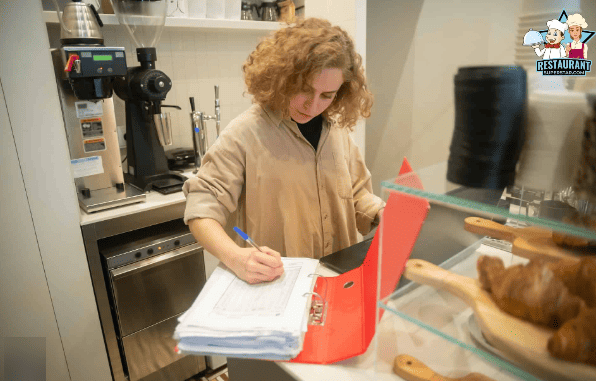
The inventory turnover rate holds significant importance in the restaurant industry as it reveals the frequency at which a restaurant’s inventory is purchased and replenished within a specific time frame.
Monitoring this metric provides valuable insights into operational efficiency and profitability. Understanding this rate is essential to keep the cash flowing, minimize waste, and ensure the items served are always fresh.
The restaurant industry’s average turnover rate is around 5. However, this can differ based on the niche or concept of the restaurant.
For instance, a fast-food joint might have a different turnover rate than a fine-dining establishment or a specialty wine bar. Here’s why researching turnover rates specific to your niche is vital:
- Niche-Specific Demand: Different niches have varying customer demands. A seafood restaurant might need more frequent deliveries of fresh catch compared to a pizzeria that uses more shelf-stable ingredients.
- Storage Constraints: Some niches, like sushi restaurants, might need more storage space, necessitating more frequent orders in smaller quantities.
- Perishability: Fine-dining establishments that pride themselves on serving fresh gourmet dishes may need to order certain high-perishability ingredients more frequently than fast-casual eateries.
- Sales Volume: A bustling city-center cafe might experience higher sales volumes and thus require a higher inventory turnover than a quaint countryside bistro.
By researching and understanding turnover rates pertinent to a restaurant’s niche, owners and managers can make educated decisions on ordering, minimizing wastage, maximizing cash flow, and ensuring the consistent quality of dishes and drinks.
Embracing Inventory Counting Best Practices

If there’s one thing I’ve learned from my time chefs down here in the Sunshine State, it’s the incredible value of good ol’ inventory management.
I’m not just talking about counting your tomatoes and salt shakers, my friends, but getting a grasp on the ins and outs of your stockpile.
So, let’s jump right in and chat about some critical inventory practices that have been absolute game-changers for me and my clients. Is that a plan?
Let’s do this.
The Role of “Just-in-Case” Inventory
Imagine you’ve got a bustling beachfront restaurant packed with hungry tourists from all over the world. The air is filled with the aroma of delicious seafood dishes, and your staff is working like a well-oiled machine.
But then, out of the blue, you receive news of an unforeseen supplier hiccup, leaving you short on freshly caught grouper – one of your signature dishes.
The pressure is on, as your reputation is at stake. Luckily, your foresight in stocking up on extra inventory saves the day.
Moments like these remind you of the importance of examining expiration dates.
Freshness reigns supreme in the culinary world, especially in sunny Florida, where locals and visitors crave the finest, most flavorful seafood.
Recipe Management to Standardize Dishes and Control Inventory
Do your dishes taste different each time you serve them? This inconsistency can mess up your inventory calculations big time.
I’ve seen places where the chef goes all freestyle, ending up with a surplus of some ingredients and a shortage of others.
Enter recipe management systems like Mstar POS. You can standardize those dishes with these babies, ensuring your team uses the exact amount every time.
Plus, with features that let you peek into menu profitability and inventory levels, it’s like having a magnifying glass over your kitchen operations.
The Importance of Stock Forecasting and Using AI for Accurate Predictions
Down in Tampa, I once advised a pizzeria owner who was constantly over-ordering pepperoni but needed more mozzarella. His sales reports were there, but he needed to make sense of them. Sound familiar?
With AI-powered forecasting tools like those in Mstar POS, predicting your stock needs becomes a breeze.
It factors in all sorts of data, from local events to the time of year. For a state as eventful as Florida—think spring break, music festivals, and the like—this is a lifesaver.
Now, once you’re set with these best practices, it’s crucial to:
- Set a schedule. Whether serving craft beers in Key West or Cuban sandwiches in Orlando, be consistent in your inventory counts. Find your rhythm, whether it’s nightly or weekly.
- Train your crew. Don’t delegate this crucial task to just anyone. Have a dedicated team and ensure they know the process inside out.
- Track and report. Keep a keen eye on what’s coming in and going out. You can elevate your performance by looking into your current stock, depletion, and usage. Advanced technology tools like Mstar POS make managing these aspects effortlessly efficient and remarkably precise.
All in all, proper inventory management can mean the difference between a thriving restaurant and one that’s constantly playing catch-up.
Invest time and a bit of tech to ensure you’re always serving the freshest dishes without any hiccups.
Cheers to maximizing profits and minimizing waste! Until next time, keep those grills hot and those freezers stocked. And if you ever find yourself in a bind, give Mstar POS a go—it’s a game-changer.
Effective Training and Scheduling

A while back, I had the opportunity to assist a friend with managing an exceptional beachfront taco restaurant in Fort Lauderdale.
This establishment offered an impressive combination of delectable recipes that would tantalize your taste buds, a prime location by the ocean, and a highly motivated team dedicated to providing outstanding taco service.
But, you know, there was this one tiny problem. Now and then, we’d end up with too much pico de gallo or not a single avocado in sight for that perfect guacamole.
And trust me, that’s different from what you want when your customers have serious taco cravings.
So, we decided to sit down and figure out how to tackle this inventory situation. We knew we needed two key things: some serious training and a solid schedule.
And let me tell you, once we got that down, it was like a whole new world for us.
Setting a Consistent Schedule for Inventory Checks
- Ride the Wave of Consistency: While our weather may be unpredictable here in Florida, your inventory checks shouldn’t be. Stick to a routine. Decide whether daily, weekly, or monthly checks suit your establishment best. Daily might be your best bet for a busy joint, especially in bustling spots like Miami or Orlando.
- Sync with Deliveries: Always do a stocktake before your supplies roll in. This helps ensure you don’t order what you already have in abundance. Think of it like checking your fridge before heading to the supermarket. It saves money and reduces waste.
- Morning or Night: counting inventory either first thing in the morning or after closing works best. The restaurant is calm, quiet, and it’s easier to focus without the lunch or dinner rush chaos.
Training Staff for Consistent Inventory Counting and Management
- Pick the Right Folks: Only some have an eagle eye for detail. Choose a couple of trustworthy team members for this critical task. Ideally, folks who are organized and have a good handle on the goings-on in the kitchen.
- Workshops & Training: Even if someone’s familiar with inventory, a refresher course always helps. Consider periodic training sessions where you can introduce new tools or techniques. It’s a game-changer, trust me!
- Tech It Up: Equip your team with the latest inventory management software or apps. We live in the digital age, and tools like these can significantly simplify the counting process and reduce human errors.
- Feedback Loop: Create an environment where your staff feels comfortable discussing inventory issues or suggesting improvements. Their hands-on experience is a goldmine of insights. And hey, a little team brainstorming session over chilled Florida orange juice? Always a win!
To truly nail the question of How Much Inventory Should Your Restaurant Carry? A harmonious blend of regular scheduling and practical staff training is essential. And as I always say, keep it consistent and efficient, and you’ll keep those tables filled and customers happy.
Tools for Efficient Inventory Tracking and Reporting
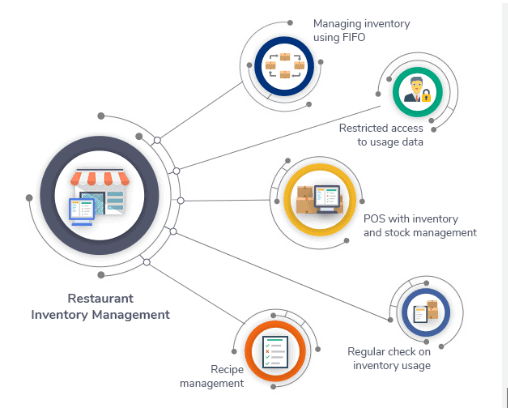
When I’m not soaking up the sun at the beach or cheering on the Gators, I’m often diving into restaurant consultations.
And you know what?
One thing that constantly comes up in my line of work is inventory tracking.
In the restaurant industry, we have a lot to handle (pun intended). But managing inventory can be easier than navigating through a Florida saw palmetto.
It’s all about having the right tools and getting the hang of the game.
Let’s break it down, shall we?
Benefits of Tracking Sitting Inventory, Depletion, and Usage
- Sitting Pretty with Sitting Inventory: Knowing what you’ve got on hand is paramount. It’s like knowing how much sunscreen you’ve got left on a long beach day. It helps you prevent overspending and ensures you’re not left red (or, in this case, out of stock) when the dinner rush hits.
- Don’t Get Depleted: Monitoring depletion means monitoring what’s being used up. It’s like watching the ice in your cooler melt on a hot day – you need to know when to grab more!
- Usin’ the Usage: Usage metrics are the real MVPs here. It helps you predict future inventory needs. Think of it as your Magic 8-Ball for inventory – it offers you a glimpse into what’s coming up.
Introducing the Concept of Variance and How to Monitor It
Alright, this might sound a bit fancy, but stick with me. Variance is the difference between what your records say you should have and what you have.
It’s the same feeling as thinking you’ve got a few more sips of sweet tea left, only to find out you’re all out.
- Spotting Sneaky Shortages: If your records say you’ve got 10 pounds of shrimp but only have 8, that’s a variance you must address. It could be a recording error or a sneaky shrimp bandit around.
- Keeping it Tight: Regularly monitoring variance ensures you’re on top of things. It can help in pinpointing issues like theft, spoilage, or mismanagement. And trust me, the sooner you catch these, the better.
- Tech to the Rescue: Utilizing modern inventory tools can effortlessly calculate variances on your behalf. Investing in a reliable system saves you significant time and mitigates avoidable frustrations.
In a nutshell, folks, having the right tools and understanding these concepts is like having a trusty map on a road trip through the Florida Keys.
It will guide you, keep you on course, and guarantee a smooth journey to your destination without obstacles.
Digital Solutions to Modernize Inventory Management
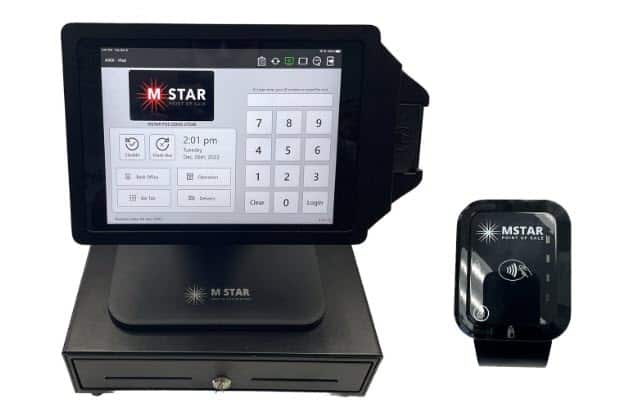
Do you know what I’ve realized as a consultant in this digital age? Technology is a total lifesaver, my friend.
And when it comes to the restaurant industry? It’s the difference between breezing down the gorgeous Overseas Highway or being painfully stuck in a Miami traffic jam.
So, today, let’s jump right into the digital realm of inventory management.
Let’s do this.
Overview of Software Like Mstar POS
- No More Guessing Games: Remember when we’d guess how much stock we needed or jot down numbers on crumpled paper? With platforms like Mstar POS, those days are as gone as disco. This software gives a clear snapshot of what’s in stock, what’s running low, and what needs reordering.
- All-In-One Package: Mstar is not your run-of-the-mill POS system with inventory management perks. It’s a powerhouse with mind-blowing features that effortlessly handle sales, staff scheduling, and customer feedback. Consider it the paramount Swiss army knife for restaurant management, ultimately transforming how you operate your business. Get ready for a transformative experience that will redefine the game.
- User-Friendly: You don’t need to be a tech whiz to get the hang of it. It’s as intuitive as using your favorite smartphone app. And for any bumps along the way, their customer support is a gem.
How Digital Platforms Streamline Operations and Enhance Profitability
- Efficiency is the Name of the Game: Using digital platforms means less time spent on manual counts, data entry, or deciphering that scribbled note from last week. It’s all there, clear as day, letting you focus on what you do best: running a killer restaurant.
- Data-Driven Decisions: With insights and analytics, you can make decisions rooted in facts, not just gut feelings. Whether spotting sales trends or identifying slow-moving items, it’s all about making intelligent moves.
- Cutting Down Wastage: Digital platforms can send alerts for products nearing expiration or ones that haven’t moved. This means you can act fast, whether it’s pushing a special to sell those items or adjusting future orders.
- Increased Profit Margins: With better inventory management, you can reduce over- and under-ordering, which can hit the pocketbook. By getting it right, you’re looking at better profit margins and a healthier bottom line.
Embracing digital solutions like Mstar POS is like swapping out that old flip phone for the latest smartphone. It’s a game-changer. As we say here in Florida, feel free to ride the wave of innovation. The waters are just fine!
Keep cooking up success and embracing the digital age, my friends. And if you ever find yourself down in the Sunshine State, give me a shout. Discuss how tech revolutionizes the restaurant scene over a fresh glass of OJ or a slice of key lime pie.
What are some inventory management software for Restaurants?
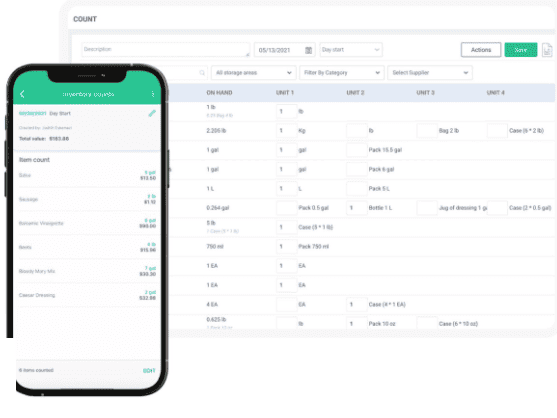
We’ve touched base on inventory and its importance to keep that balanced. But let’s deep dive into some digital tools that can make this task a breeze. I’ve seen firsthand the difference the right software can make for all my budding restaurateurs and chefs.
And honestly, in the age of technology, who wants to be left scribbling on paper when fantastic tools exist?
So, here’s my list of restaurants’ best inventory management software. And trust me, these are game-changers.
- Mstar POS: I might be biased because Mstar’s a Florida gem, but trust me when I say this software gets it DONE. It’s similar to Lightspeed but with a tropical twist. Automated ordering based on sales data, inventory tracking, recipe management—you name it, Mstar has it.
- MarketMan: This tool is a lifesaver for those who want everything under one digital roof. Real-time management? Check. Integration with various POS systems? Check. Reduce food waste and streamline costs. Double-check. Its features, like recipe management and waste tracking, ensure every cent and ingredient counts.
- xtraCHEF by Toast: One of my personal favorites! Especially if you’re already working with the Toast POS system. Snap a pic of your invoices, sync them up, and let this baby do its thing. It’s user-friendly and offers insights that can genuinely boost your profitability.
- CrunchTime: This one’s for those who love diving deep into the numbers. Analyze and optimize both inventory and labor costs. Do you have multiple locations? No problem. CrunchTime has got you covered, helping you centralize purchases and automate orders.
- Lightspeed Restaurant: Lightspeed is not just a POS. Their inventory features are on point. Get alerts when you’re running low on stock, manage those tasty recipes, and let the system’s data-driven insights guide your ordering. It’s like having a little guardian angel for your inventory.
- Yellow Dog: If you’re in the commissary or catering business, give this a whirl. Track everything across locations, from production transfers. Integrate it with your POS, and boom—you’re golden.
In conclusion, choosing the right inventory management software is like picking the right fishing spot in Florida. You have to find the one that suits you best. But once you do?
You’re all set for success. Remember, the question isn’t “How Much Inventory Should Your Restaurant Carry?” but “How can I manage it most effectively?”
Conclusion: Ensuring Inventory Turnover Success
Alright, folks, it’s time to wrap up this chat on inventory management, just like enjoying a breathtaking sunset over the Gulf. But hey, before we say goodbye, let’s quickly go over some key points, shall we?
Reinforcing the Importance of Balanced Inventory Management
Managing your inventory is more than just counting tomatoes and flour bags. It’s about balance.
Think of it like balancing on a paddleboard—too much on one side and taking an unplanned swim; too little, and you might drift without direction.
Your inventory is the heartbeat of your restaurant. Overstock, and you risk waste and reduced profits. Understock, and you risk unhappy customers and missed sales opportunities.
Stay Informed, Adapt, and Embrace Digital:
- Knowledge is Power: The restaurant scene changes. Consumer tastes shift. Suppliers evolve. Being clued in means staying ahead of the curve. Read, learn, attend workshops. The more you know, the better your decisions.
- Use Those Digital Lifelines: I can’t stress this enough. Tools like Mstar POS aren’t just fancy extras; they’re essentials. They’re like that trusty cast net you throw out to catch baitfish—efficient and effective. So, don’t shy away from technology. Embrace it!
- Adaptation is Key: Being rigid in the restaurant biz is a surefire way to get left in the dust. The data and insights from your digital tools? They’re nuggets of gold. Use them to tweak your menu, adjust your inventory, or even change your marketing strategy.
As we wrap this up, my friends, remember: the restaurant industry is as dynamic as our Florida weather—constantly changing and full of surprises. But you’re setting yourself up for success with the right mindset, tools, and adaptability.
Whether cooking up grouper sandwiches on the coast or serving fancy dishes in a city restaurant, keeping your inventory game strong is essential.
So, to all new restaurant owners, chefs, and culinary visionaries, keep those kitchens humming, embrace innovation, and here’s to many plates of success.
And hey, if you’re ever in the neighborhood, let’s swap stories over some good ol’ southern BBQ.
Till then, take care and keep it tasty.
Jeff Smith is a Restaurant Consultant with over 20 years of hospitality experience ranging from server to owner and general manager. He focuses on Restaurant POS technology as well as restaurant marketing. Check out our world-famous restaurant resources page for a comprehensive offering of hand-picked resources and tools to help your business. You can also check out some of our other restaurant business articles.


